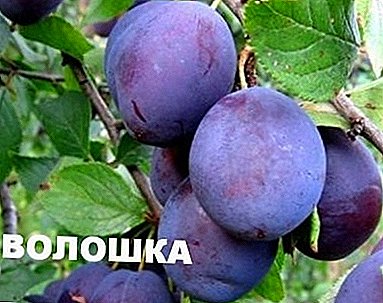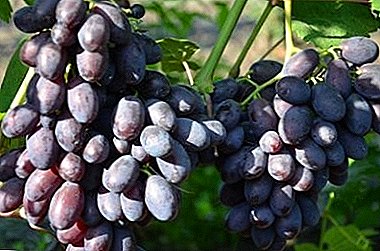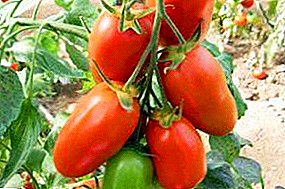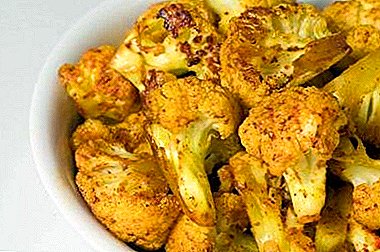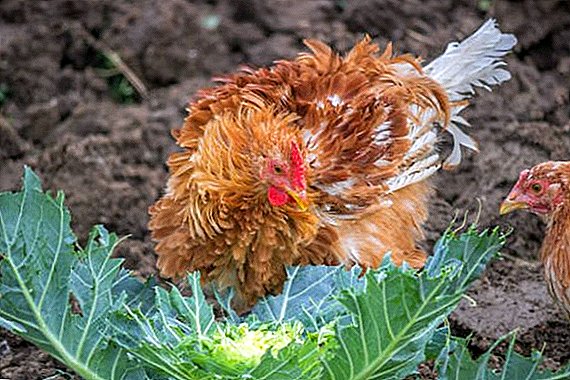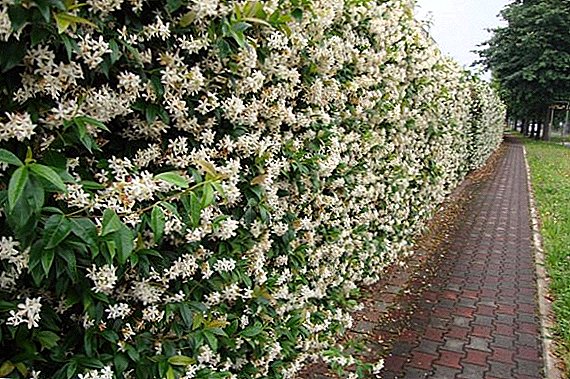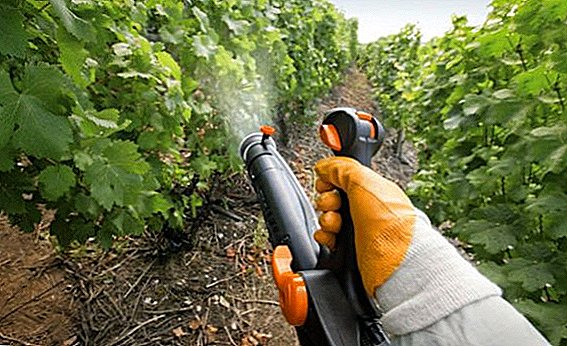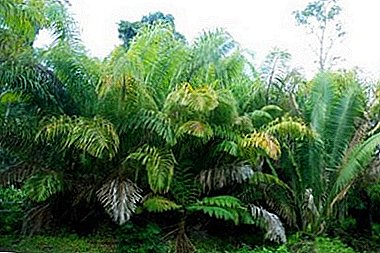
Palma Raffia or Madagascar Palm - palm family plant.
Natural habitat This type of plant - the island of Madagascar (for which he received the second name), the coast of Africa.
She was also specially brought for breeding in Central and South America (mainly the area along the Amazon River). It grows mainly near rivers or swamps.
Description
 Rafia among the rest of the palm trees does not stand out in height, it can reach about 15 meters.
Rafia among the rest of the palm trees does not stand out in height, it can reach about 15 meters.
Have raffia tight trunkthat gives the plant color and attractive appearance.
Raffia is a monocot plant.
Cirrus leaves extend vertically from the top of its trunk, are up to 3 meters wide, and in length can reach an average of 17-19 meters. In some species up to 25 meters. For this feature, the leaves are considered the longest in the world. They appear on average once a year.
Under one such sheet in rainy weather can hide about 20 people.
The leaves of this type of palm trees have a pronounced large median vein, which passes into the petiole. It has an extension in the place where the leaf attaches to the trunk.
Palm trees have one trunk, but there are also multi-stemmed species.
Raffia counts up to 20 different species, here are the main ones:
- Textile R. textilis - contains a special fiber;
- Royal - record holder, leaves up to 25 meters;
- Wine - from its inflorescences get sugar;
- Madagascar;
- Mukonosnaya R. Farinifera - rich in starch.
Another feature of the plant is that it is monocarpic plant - that is, fruits only once in a lifetime. The plant has flowering and fruit ripening only once in a lifetime, and then dies. Flowering lasts on average about a year.
In some species of raffia, only the stem with leaves dies off, and the roots remain to live, later giving new shoots and continuing their existence.
Palm tree matures on average by age 50.
Inflorescences quite large, grow up to 5 meters in diameter, and include pistillate and staminate flowers.
Fruit palm-shaped egg-shaped, medium-sized, covered with dense smooth terracotta sandpaper.
Propagated by seeds.
A photo
Photos of the record holder by the length of the leaves.



Care
Madagascar has a predominantly humid tropical climate with an average temperature of around 25 degrees.
Sufficient moisture and soil fertility create great opportunities for the rapid growth and development of all types of palm trees.
Raffia rarely affected by pests and does not require special care.
Sometimes the lower leaves wither and die, but this is a biological feature of this type of palm.
Useful properties and application
 Leaves and scapes contain special fibers called raffia and piassawa, very dense to the touch. They are used for the production of brushes, baskets and hats, as well as for the manufacture of technical materials and in plant growing for dressing.
Leaves and scapes contain special fibers called raffia and piassawa, very dense to the touch. They are used for the production of brushes, baskets and hats, as well as for the manufacture of technical materials and in plant growing for dressing.
Core This plant contains starch in large quantities, flour is produced from it. And the leaves are covered with a substance similar to wax, it is used in the manufacture of candles, shoe care products, shoe polish, and also it is an excellent polishing material.
From raffia wine by trimming the inflorescences or drip of its trunk, sugar juice is obtained, from which wine is produced. Juice contains about 5% sugar. One palm tree per day produces about 6 liters of this juice.
Of fruits get butter.
The leaves are used by the peoples of the Congo to make costumes in folk style, and in some areas they are used as roofing materials.
Diseases and pests
The main diseases include thyroids and thrips. These parasites damage the leaves and the stem of the plant, spots appear and the leaves die off.
Shchitovka leaves brown spots on the leaves, can lead to their dropping.
Spider mite leaves the web on the trunk, and the leaves become sluggish and lifeless.
Mealybugs lead to curvature of the leaf palm.
Red palm weevil, unlike other parasites, affects the core of the trunk, feeding on it and laying eggs.
Conclusion
Undoubtedly, the Raffia palm of Madagascar is a slowly growing, but very unusual, exotic plant.
Sugar juice is produced from inflorescences for making wine, ropes, hats, brushes and other material are made from the substance from the stem. And thanks to the length of its leaves, it has received world fame.


